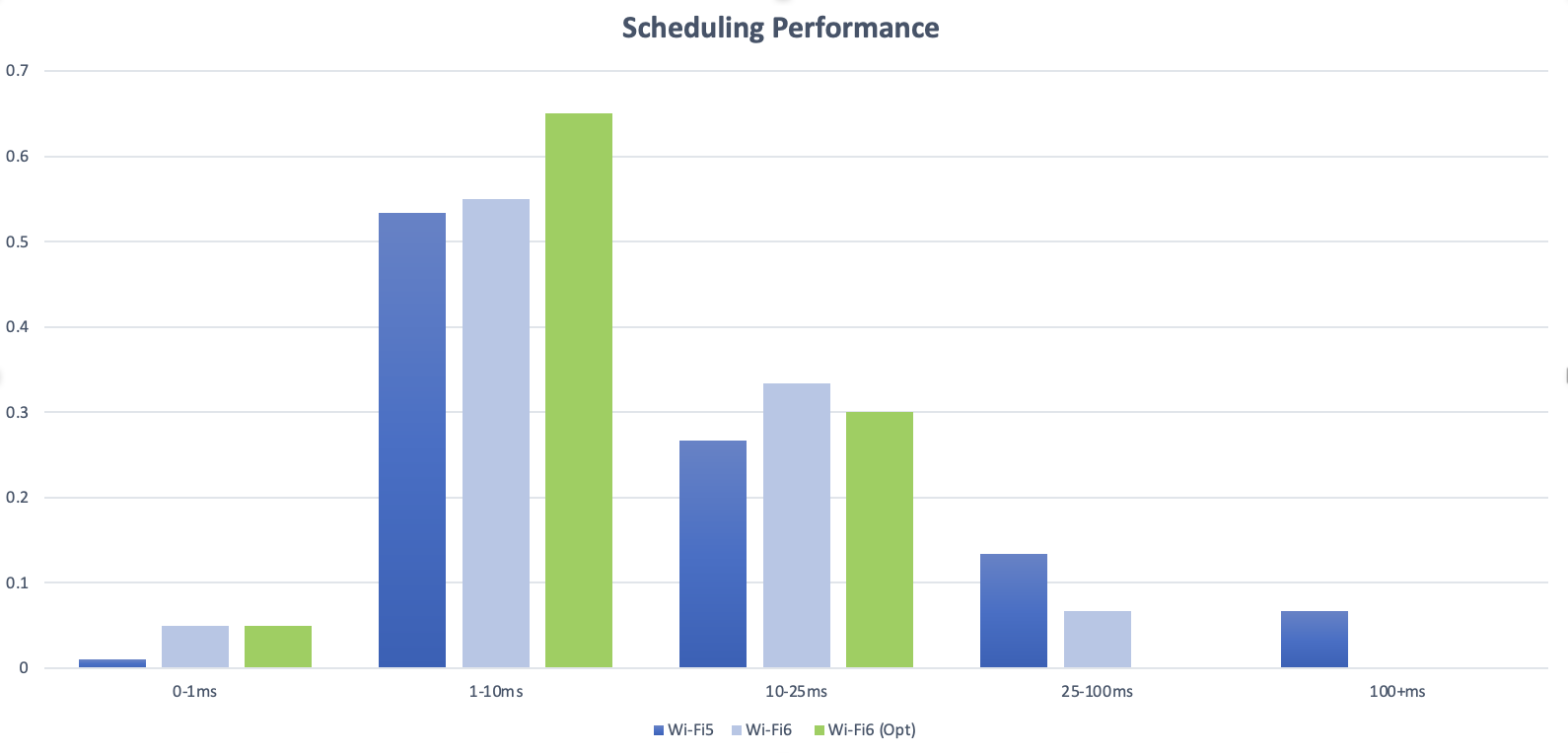- Yes, your internet provider can throttle your speed. Here's how to stop it (or at least try to)
- Half of Firms Suffer Two Supply Chain Incidents in Past Year
- Data strategy e qualità del dato: come gettare le basi per implementare l’AI
- INE Security Alert: $16.6 Billion in Cyber Losses Underscore Critical Need for Advanced Security Training
- From help desk to AI harmony: Redefining IT support in the age of intelligent automation
Wi-Fi 6E, Something Old, Something New, Something Borrowed, Something Blue – Part 1

Part 1 of the 4-part Wi-Fi 6E Series
This is part 1 of a 4-part series entitled “Something old, something new, something borrowed and something blue”. Each of these four blogs will dive into different aspects of the latest Wi-Fi 6E standard, new innovations, and why it’s important to understand these features.
With the recent release of a number of Wi-Fi 6E-enabled devices at CES, now is a good time to take into account some of the benefits that Wi-Fi 6/6E provides. Wi-Fi 6/6E was not an “incremental” change, it was a major leap forward with the new innovations and most importantly, the addition of the newly allocated 6GHz spectrum (which varies across regions). In this series, we will provide the reader with an in-depth understanding of some of these advanced features in Wi-Fi 6 and how some of these features benefit them. Furthermore, we will discuss some of the new innovations built around the Wi-Fi 6E standard and how IT leaders just starting to realize the potential for 6GHz wireless.
“Something Old”
While the ability to support multiple simultaneous users has been available prior to Wi-Fi 6E this is one “old” feature that becomes enhanced in Wi-Fi 6E. In part 1 we want to look at some of the changes to the physical layer, what changed, and how this helps your WiFi performance.
Of all the features added to Wi-Fi 6, one, in particular, will have a very significant effect on the new 6GHz band and deserves some in-depth consideration and that is OFDMA. Remember all that old 802.11ax optional capability is now mandatory at 6GHz as there is no requirement for brownfield support. There were other technologies added to the legacy bands in Wi-Fi 6 that really paved the way for substantial improvements in performance. For example, increased modulation rates (up to 1024 QAM, think of this as higher maximum throughput), better spatial isolation (BSSID Coloring/OBSS and multiple timers for IBSS and OBSS, think of this as better performance in an area with lots of clients and APs), Target Wait Time (better battery life for clients), and others.
Digging into OFDM – The Virtual Wires of Wi-Fi
OFDM is the “baseband” signal which is the underlying waveform that is used to generate the RF signal we think of as Wi-Fi from the digital input. This baseband signal is comprised of multiple “tones”. The combination of these tones is called Orthogonal Frequency Division Multiplexing (OFDM). Each tone is orthogonal to the other tones which means the information on that tone can be detected with limited interference from other tones even though they are tightly spaced together. Think of each of these tones as a wire that information can be conducted. Fewer tones mean fewer wires but higher throughput for any one wire, more tones mean more wires but lower throughput per wire. The total “available” throughput, in either case, ends up being basically the same. In 802.11ax a change was made to move from 64 tones to 256 tones (4x) in a 20MHz channel.
As discussed, this increase in tones has very little impact on the link available throughput but, there are other trade-offs. First, the 4x increase in tones improves the robustness of multipath (improved resistance to inter-symbol interference) but loses some effectiveness in a high-speed mobile environment (doppler shift). So, under typical indoor use, we get a benefit of a more reliable connection. The second, and biggest change is the ability to better “sub-channelize” the physical layer. This access method is called Orthogonal Frequency Division Multiple Access or OFDMA. A sub-channel or group of tones at a given time slot is considered a “resource unit” often referred to as an “RU”.
Since the ratio of the number of tones is relative to the bandwidth, in a 20MHz channel there can be up to 9 RUs (26 tone groups) for any one frame and in a 160MHz channel this could go up to 74 RUs (notice this is not 72 as there are some efficiencies due to higher ratio of usable tones at higher bandwidths). RUs can come in larger sizes also to match the resource demand. For example, with a 20Hz channel, you can additionally have 52 tones, 106 tones, or the full band on 242 tones. Furthermore, you can to some degree mix and match these different-sized RUs in the same frame. These RUs provide a mechanism to transmit to multi-users (MU) at the same time without having to rely on spatial diversity. Let’s put a number to why this is important. Take a 64-byte packet operating at some typical rate like 256 QAM with ¾ rate coding (MCS8). With 40MHz channels, one slot is capable of around 380 bytes. What happens if a 64-byte packet (typical packet) is transmitted over this 40MHz channel? Less than 20% of the channel is used, and over 80% of that resource is wasted! With the use of RU’s, we can send multiple packets at the same time and pretty much eliminate that inefficiency. Granted not all packets are 64 bytes but larger packets are broken into smaller physical layer packets called Protocol Data Units (PDUs) to be transmitted and again will not fill up the entire spectrum for all PDUs.
So how does the AP signal the client when and where its RUs are allocated since there are now multiple client packets in a time slot? This is accomplished using two mechanisms. First, there is now a new field in the preamble that provides the “where” called SIG-B. This field provides how the resource units are allocated over the slot and the per-client information that specifies which resource units are allocated for my specific client.
There are really 3 options to transmit multi-user packets at the same time:
- Multiple simultaneous users’ signals are transmitted using the full band but the spatial characteristics of the channel allow them to communicate with limited interference (spatial separation).
- Multi-User with different users assigned to different RUs (frequency separation).
- A combination of both.
Option 1 is a multiplier – If the channel permits sending multiple streams over the same channel the capacity of the channel grows proportional to the number of users. There are limitations to this, for example, the number of uplink spatial streams is equal to or less than the number of uplink receivers in the access point. If the AP and the environment support option 1 it would typically be used.
Option 2 is an optimization – If the network has multiple clients that support Wi-Fi 6 that have traffic to send at the same time the network will optimize by sending the traffic at the same time.
The second function that facilitates the “when” the use of multiple clients is the “trigger frame”. When the AP is ready for the clients to simultaneously send uplink information it transmits a trigger frame with the client information. The client waits for one short interframe spacing (SIF) and then transmits the uplink data on the appropriate RUs. The AP can then send back a “multi-Station ACK” allowing the multiple client uplink packets to be acknowledged simultaneously. Uplink ACKs are transmitted similarly to the uplink data with a trigger frame on the allocated RUs.

Given 6GHz has a much larger block of spectrum and the most common FCC regulation to deploy is based on power spectral density (PSD), which allows for more power with wider channels, it is expected that most deployments will use 80MHz or 160MHz (see 6-GHz Unlicensed Spectrum Regulations and Deployment Options White Paper). With the previous generation of one packet per time, slot 80MHz channels became very inefficient, and hence why you rarely saw this type of operation for multiple access. With 802.11ax the ability to do both frequency and spatial division, the clients can be assigned only the resources necessary for their needs no matter how wide the channel is thus making the use of these wider channels much more effective. In the 2.4GHz and 5GHz bands clients capable of supporting OFDMA had to contend for a slot with legacy clients and of course since it requires more than one client to participate in “multiple access” it would only contend for a multiuser slot if there were multiple clients that could support OFDMA with packets to transfer. At 6GHz all clients support OFDMA and hence no need to contend with legacy clients for access, every slot can transmit multiple packets. With the addition of the 6GHz channels, we will just now begin to fully benefit from the use of OFDMA.
With Wi-Fi 6 the link can now be divided into both bandwidth and time so specific chunks of resources can be “scheduled” for delivery further improving efficiency and latency (see Figure 2 below).
In addition to the improvement of efficiency in the wider band channels the “triggered multi-user access” allows for the scheduling of packets in a much more predictable manner. The 802.11ax standard does not dictate all the necessary details for managing the packet scheduling and hence this is an area where there can be some differentiation in performance between implementations. Cisco, a company with a rich history of packet scheduling and optimization is obviously exploring this area also. For example, in the data below we can see the latency comparison between a typical Wi-Fi 5 network, a Wi-Fi 6 network, and a Wi-Fi 6 network with optimization in scheduling. Notice with Wi-Fi 6 there is a substantial reduction in outlying packets exceeding the 25ms delay bound and with some optimization, a further reduction in latency can be seen. This is an example of the value of optimized scheduling with 802.11ax multi-user capability provides.

Wi-Fi 6E provided a leap forward in capability. Some we could not fully recognize until 6GHz was made available. Benefits in capacity, latency, and stability are all a part of the 802.11ax update. In addition, vendors like Cisco can provide optimized packet scheduling to further enhance the user’s experience. Deploying Wi-Fi 6E capable access points will allow the operator to begin to experience these significant new enhancements in performance.
Share:

